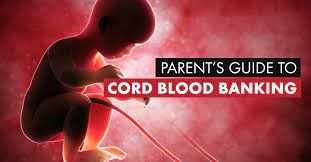What is cord blood banking?

- What is cord blood banking?
Cord blood banking is the process of collecting, processing, and storing the blood that remains in the placenta and umbilical cord after a baby is born. This blood is a rich source of stem cells, which are immature cells that can develop into different types of cells in the body.
- What are the different types of cord blood banking?
There are two main types of cord blood banking: private and public. Private cord blood banking involves storing cord blood in a private cord blood bank for the exclusive use of the family of the baby from whom the cord blood was collected. Public cord blood banking involves storing cord blood in a public cord blood bank for use by anyone in need of a stem cell transplant. Public cord blood banks are typically operated by nonprofit organizations and are funded by donations.
- What are the potential uses of cord blood?
Cord blood has the potential to be used in medical treatments, such as stem cell transplants, to treat a variety of diseases and disorders. Some examples of medical conditions that can be treated with cord blood include blood disorders, immune disorders, and genetic disorders. Cord blood is also a valuable resource for scientific research and has the potential to be used in a variety of experimental treatments.
- What are the considerations to keep in mind when it comes to cord blood banking?
There are several considerations to keep in mind when it comes to cord blood banking, including cost, ethical considerations, and the likelihood of the child needing their own cord blood for a medical treatment. Private cord blood banking can be expensive, while public cord blood banking is typically funded by donations. There are also ethical considerations surrounding the collection and storage of cord blood, including issues of consent and potential conflicts of interest. It is important to carefully weigh the potential benefits and drawbacks of cord blood banking before making a decision.
- How is cord blood collected, processed, and stored?
Cord blood is collected after the baby is born and the umbilical cord is cut. The process of collecting cord blood typically takes a few minutes and is painless for both the mother and the baby. The collected cord blood is then transported to a cord blood bank, where it is processed and stored. The processing of cord blood involves separating the stem cells from the other components of the blood and preserving them for future use. The processed cord blood is then stored in a cryogenic container, which is designed to keep the stem cells viable for an extended period of time.
- What are the success rates of cord blood transplants and the potential risks and complications?
The success rates of cord blood transplants can vary depending on a number of factors, such as the age and health of the recipient, the type of medical condition being treated, and the quality of the cord blood. In general, cord blood transplants have a high success rate and are considered to be a safe and effective treatment option for many medical conditions. However, like any medical procedure, cord blood transplants carry some risks and complications, including infection, bleeding, and rejection of the transplanted stem cells.
- How can families donate their baby's cord blood to a public cord blood bank?
Families who are interested in donating their baby's cord blood to a public cord blood bank can do so by contacting a public cord blood bank and expressing their interest in donating. The cord blood bank will provide information on the process of donating cord blood and the eligibility requirements. In general, expectant parents must decide to donate their baby's cord blood before the baby is born and must meet certain eligibility criteria, such as having a low-risk pregnancy and delivering at a hospital that is affiliated with the cord blood bank.


Comments
Post a Comment